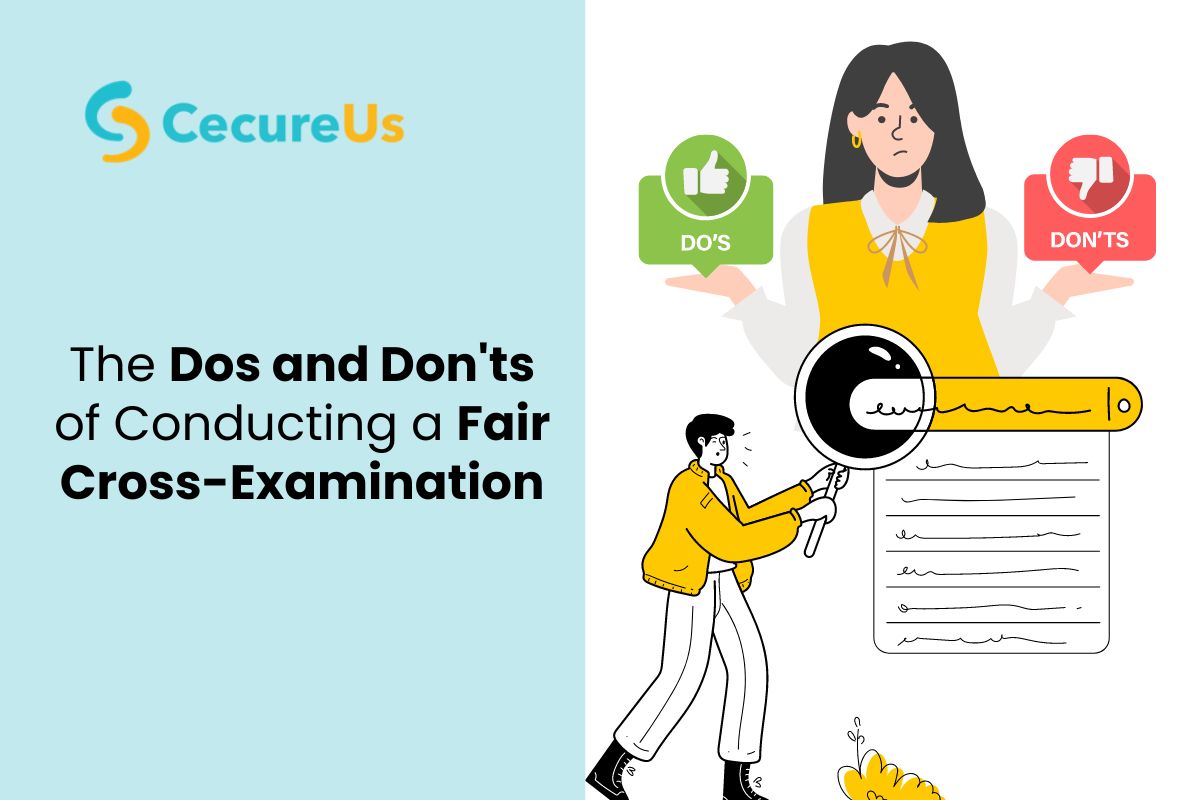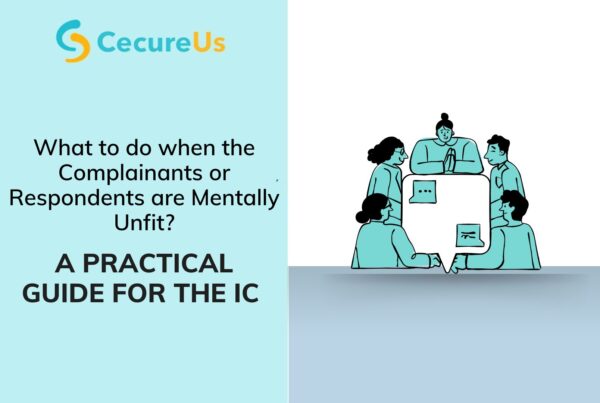
When conducting a cross-examination, whether by the complainant or the respondent, it is crucial to follow certain dos and don’ts to ensure a fair and respectful process. Adhering to these guidelines will help uncover the truth effectively while maintaining professionalism. This approach is essential in cases of workplace investigations, sexual harassment allegations, and other sensitive matters.
Dos:
- Prepare Thoroughly:
-
- Understand the case details and the testimony provided by the other party.
- Develop a clear strategy and list of questions that aim to clarify facts and uncover inconsistencies.
- Maintain Professionalism:
-
- Conduct the cross-examination with a calm and respectful demeanor.
- Show respect towards the other party at all times.
- Ask Clear and Concise Questions:
-
- Use straightforward language and avoid complex or leading questions.
- Ensure questions are specific and directly related to the case.
- Listen Actively:
-
- Pay close attention to the responses given.
- Use the responses to guide your subsequent questions.
- Be Objective:
-
- Focus on obtaining factual information rather than personal attacks or opinions.
- Stay neutral and avoid showing bias.
- Document Responses:
-
- Keep a detailed record of all responses for future reference and clarity.
- Seek Clarity:
-
- Use this opportunity to gain a full understanding of all allegations and uncover any inconsistencies.
- Encourage Closure:
-
- Acknowledge that the aggrieved person may want closure for their trauma. Encourage them to ask questions that will help them achieve this.
Don’ts:
- Avoid Aggressiveness:
-
- Do not intimidate, harass, or badger the other party.
- Maintain a calm and composed approach even if the responses are not favorable.
- No Personal Attacks:
-
- Do not make personal comments or judgments about the other party.
- Stick to the facts and avoid personal biases.
- Avoid Leading Questions:
-
- Do not ask questions that suggest the answer.
- Focus on open-ended questions that allow the other party to provide information freely.
- Do Not Interrupt:
-
- Allow the other party to complete their answers without interruption.
- Be patient and give them time to respond fully.
- Avoid Assumptions:
-
- Do not assume facts that are not in evidence.
- Base your questions on the testimony and evidence presented.
- Stay Away from Sensitive or Irrelevant Topics:
-
- Do not delve into topics that are unrelated to the case or that could cause unnecessary distress to the other party.
- Keep the focus on relevant and material facts.
Sample Questions From Complainant to Respondent
- Clarification Questions:
-
- “Can you describe what happened on [specific date] from your perspective?”
- “What did you mean when you said [specific statement] during our interaction?”
- Fact-Finding Questions:
-
- “Who else was present during the incident?”
- “What actions did you take immediately after our encounter?”
- Consistency Questions:
-
- “Can you explain any differences between your current testimony and your previous statements?”
- “Have you discussed the incident with anyone else? If so, who and what was discussed?”
- Impact Questions:
-
- “How do you believe your actions have affected me personally and professionally?”
- “What do you think would have been a better way to handle the situation?”
- Closure Questions:
-
- “Is there anything specific you would like to acknowledge or clarify regarding the incident?”
- “Are there any unresolved issues or concerns from your side that you would like to address?”
- “How do you feel about the responses you have received so far from this process?”
- “What do you think needs to happen for both of us to move forward from this incident?”
Sample Questions From Respondent to Complainant
- Clarification Questions:
-
- “Why was this raised now, when we have been good friends for a long time?”
- “What do you hope to achieve by raising this?”
- Fact-Finding Questions:
-
- “What is the evidence that you have?”
- “What was the impact you experienced?”
- Consistency Questions:
-
- “Why was your testimony changed?”
- “Whom all have you spoken to about this?”
- Impact Questions:
-
- “If there was an impact, why did you not file a complaint or say no to me earlier?”
- “How has this incident affected you personally and professionally?”
- Closure Questions:
-
- “Is there anything specific you would like me to acknowledge or clarify regarding the incident?”
- “Are there any unresolved issues or concerns that you would like to address?”
- “How do you feel about the responses you have received so far from this process?”
- “What would help you feel that justice has been served in this case?”
Tips for Internal Committee Moderating a Cross-Examination
- Set Clear Ground Rules:
-
- Establish and communicate the rules for the cross-examination process to all parties involved.
- Ensure everyone understands the importance of maintaining respect and professionalism.
- Monitor Behavior:
-
- Be vigilant in observing the behavior of both parties.
- Intervene if either party becomes aggressive, interrupts, or strays into irrelevant or sensitive topics.
- Ensure Fairness:
-
- Allow both parties equal time and opportunity to ask questions and respond.
- Prevent any form of bias from influencing the proceedings.
- Facilitate Clarity:
-
- Encourage clear and concise questioning and answering.
- Assist in rephrasing or clarifying questions if needed to avoid confusion.
- Document the Process:
-
- Keep a detailed record of the cross-examination, including questions asked and responses given.
- This documentation is crucial for transparency and future reference.
- Provide Support:
-
- Offer support to both parties, especially if the process becomes emotionally challenging.
- Ensure there are resources available for those who may need them.
By following these dos and don’ts, and with effective moderation by the internal committee, the cross-examination process can be conducted in a manner that is fair, respectful, and effective in uncovering the truth. This approach not only helps in resolving the case efficiently but also ensures that the dignity of all parties involved is maintained. Implementing these best practices in cross-examinations, especially in workplace investigations and sexual harassment cases, will contribute to a more just and equitable process.
Please reach out to us for any queries on Conducting a Fair Cross-Examination.
For more blogs and articles, visit our official website. Contact us for workshops and queries related to POSH, EAP (Employee Assistance Program) , Diversity and Inclusion and Code Of Conduct.




